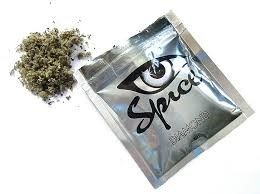Drug abuse and addiction is one of the most difficult trials of our modern society. Whether they are targeting the consumers or the market itself, it seems authorities and healthcare professionals are always one step behind. One particular challenge that governments come across is understanding and taking measures against an increasing number of new drug of abuse that appear in the market. Especially since their production is done by molecular alteration (sometimes just a single chemical group) of one original illicit drug. The new derivative of the drug will have similar desired effects for the consumers as the old one but since it is not registered yet by the DEA or other authorities as illicit, that means that its consumption is legal. The lack of updated information also affects healthcare professionals, as the treatments for addiction, withdrawal symptoms, and overdoses are not always up to date.
Here are three examples of New Synthetic Drugs you should know about:
Synthetic cannabinoids: They are human-made mind-altering chemicals that have been marketed as herbal incense or “herbal smoking blends”, and sold under common names like K2, spice, and synthetic marijuana. There are different ways of consuming this drug: sprayed on shredded plant material so it can be smoked, as an infusion, or as liquids to be vaporized and inhaled in e-cigarettes. The effects on consumers include relaxation, euphoria, and at higher doses loss of coordination, anxiety, paranoia, psychosis, and aggressive behavior. Overdose can manifest as toxic reactions, elevated blood pressure, reduced blood supply to the heart, kidney damage, and seizures. Unfortunately, there is not yet an antidote for cases of overdose. Withdrawal symptoms may include headaches, anxiety, depression, and irritability. Regular use can eventually cause mental health conditions, heart problems, and behavioral and cognitive impairments.

Isotonitazene: Also called by its street name “iso” first appeared on the illicit synthetic drug market both in Europe and the US in 2019. It is a potent synthetic opioid, whose abuse has already caused multiple deaths. Reports from police departments around the world have shared that the drug can be found in the form of a yellow powder, liquid form, or even as a nasal spray in China. For consumers, it causes sensations such as euphoria, relaxation, analgesia, sedation, bradycardia, and hypothermia. The most serious health risks include respiratory depression, apnea, respiratory arrest, and death. If its antidote naloxone is administered urgently, it can effectively prevent respiratory depression. We don’t know to date the long-term effects of Iso nor do we know the possible chronic toxicity, but one can assume it’s similar to other opioids.

Arylcyclohexylamine (ACH): They include three main compounds: ketamine, phencyclidine, and eticyclidine derivatives. In terms of effects ACH derivatives when used recreationally induce euphoric effects, such as cottony or drunkenness at low doses, and hallucinations and powerful dissociation effects at high doses. Its use has been mainly described in electro-alternative culture, rave parties, and, more particularly, in Asian countries. It is mostly snorted, although some people inject ketamine intravascularly or intramuscularly. Low doses produce a drowsy sensation but do not go as far as the so-called “K-hole”—a “black hole” effect characteristic of ketamine that can include cognitive and amnesic disorders, mood and behavioral problems, hallucinatory delirium, nightmares, and loss of identity and contact with reality. Management of overdose is based on symptomatic treatment, with hyperhydration (to promote substance excretion) and tracheal intubation (to counter the effects of sedation). In terms of Long term effects, the toxicity profile of chronic intake is still unclear but appears to mainly include severe, irreversible damage to the bladder, such as thickening of the bladder wall, leading to secondary kidney damage.

In conclusion, New Synthetic Drugs such as synthetic cannabinoids, Isotonitazene, and Arylcyclohexylamines have multiple undesired effects, including long-term ones and their presence in the market calls for constant updates in addiction treatment. It is therefore essential, as soon as they appear, to make efforts to understand the mechanisms of action along with the effects of these drugs and to constantly update the regulations to prevent further harm.
By Marina Figueredo & Luis D’Marco










